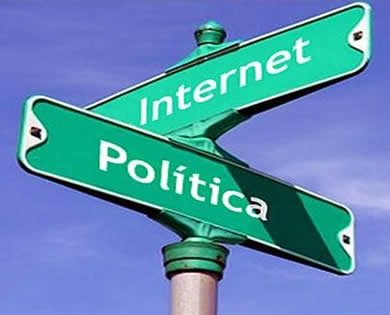Social Media and The New Political Paradigm
Technology is like time: whether or not we are paying attention it is constantly happening. Even when we are paying close attention, it is difficult to fully register—and appreciate—the ways our world is ceaselessly being upgraded, improved and changed. When understood and embraced, technology invariably is an empowering agent, capable of making complicated or expensive endeavors easier, quicker and cheaper.
Looking back at the last five years, two specific events illustrate the emerging influence of technology in general and social media in particular. In August, 2006, at an otherwise unremarkable campaign event, George Allen uttered the single ill-advised word that wound up changing the complexion of his Senate race. His use of the derogatory term macaca was caught on tape by the slur’s recipient, who had come to record the event. The footage ended up on a relatively new service called YouTube and immediately—and in very 21st Century fashion—went “viral”. All of a sudden, and much to Allen’s chagrin, this became an unavoidable topic of discussion. In a contest where Allen had enjoyed what many considered an insurmountable lead, this controversy dogged him for the final months of the campaign and he ended up losing by less than one percentage point.
In the summer of 2009, the protests in Iran became a leading news story across the globe. To recap: as conditions within the country deteriorated in the wake of a disputed election, the flow of reliable information was hampered once the government effectively shut down the Internet (disabling access to the servers). At the same time, most “major” news networks were unable, for a variety of logistical reasons, to penetrate the officially constructed wall of secrecy. Protesters inside Iran used Twitter to update and organize, while people outside the country shared and promoted these messages, spreading awareness in an unprecedented fashion. Notice was served that the dissemination (and control) of information will be increasingly difficult, if not impossible, to regulate. If the Internet succeeded in making the concept of news a 24/7 proposition, Twitter has created a 10,080 second-per-week reality: there is now a virtually uninterrupted influx of updates available for anyone with broadband access.
Flash forward to 2011: unfortunately, it appears as though the most noteworthy political story of the year will be the self-inflicted turmoil wrought by U.S. Representative Anthony Weiner. While this tale has less to do with politics and more to do with personality, it still illustrates the ways our new methods of communication can hurt as well as help us. Hopefully there will be other events that will ultimately define 2011 politically, but if nothing else Weiner has provided us with a clichéd “teaching moment”: in regards to technology and the ways it impacts all of our lives, Weiner’s story epitomizes the often uneasy intersection between politics and personal privacy.
It seems safe to suggest that Anthony Weiner’s experience will endure, not unlike Gary Hart’s implosion in 1988, as a paradigm shift with cultural and sociopolitical implications. Yet, unlike Hart’s embarrassing downfall (wherein he essentially dared reporters to uncover any inappropriate behavior, which they promptly did), Weiner’s disintegration, albeit similarly self-imposed, involved a controversy where no “action” (unavoidable pun not necessarily intended) occurred. In other words, an elected official felt obliged to resign in disgrace, for consensual activities that transpired electronically.
Obviously the concept of technology and privacy potentially impacts everyone, and last year’s piece “Selling The Stories Of Our Lives: Technology and Privacy” takes an in-depth look at the very complicated dynamic of innovation, convenience and notions of security and personal space. That report concludes with the following observation: How we process and eventually regulate the exchange and deployment of this information will be a commentary on how we are able to exist as employers, employees, parents, children, friends, acquaintances and enemies all with the data to contradict or redefine any of those public (and private) personas.

